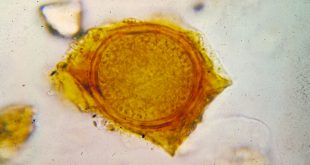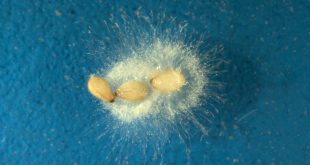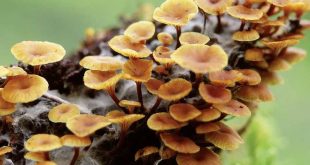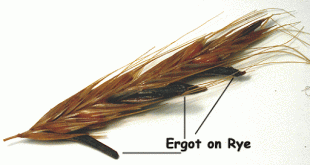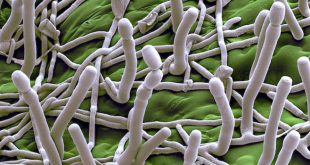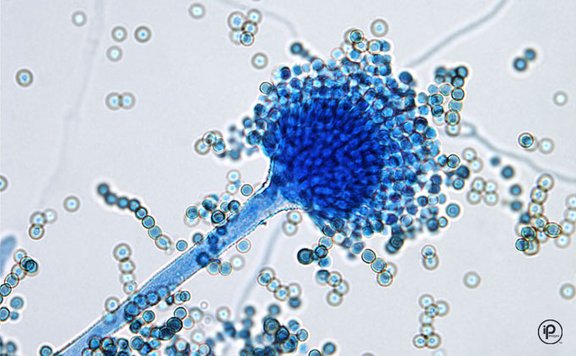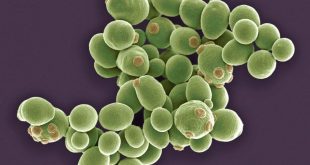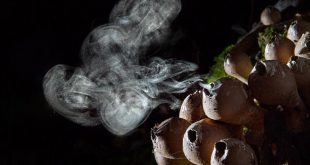Article author: Shawon Gosh Payell Synchytrium endobioticum is one of the chytrid fungi which causes black scab or the wart disease of potato. Though potato is the only cultivated host but Some other plants of the genus Solanum are also infected by it. According to Karling (1964), it has a …
Read More »Oomycetes: Order Peronosporales
Order Peronosporales, Aquatic or terrestrial; parasitic on algae or vascular plants, the latter mostly obligate parasites causing downy mildews; in advanced species, zoosporangia borne on well-differentiated sporangiophores, deciduous and behaving as conidia (asexually produced spores); example genera include Albugo, Peronospora, Bremia, and Plasmopara. Habitat They are aquatic, amphibious and terrestrial species. Forming a highly group …
Read More »Oomycetes: Order Saprolegnia
The oomycetes, also known as “water molds”, are a group of several hundred organisms that include some of the most devastating plant pathogens. The diseases they cause include seedling blights, damping-off, root rots, foliar blights and downy mildews. Some notable diseases are the late blight of potato, downy mildew of …
Read More »Diversity in Living Organisms: Five Kingdom Classification
Our living planet has a huge number of living organisms. We can’t know each of them properly without a proper format that going to direct us to know this variety and richness of organisms. That’s why we were introduce with a new term-CLASSIFICATION! What is Classification? The system of assembling …
Read More »Agaricales: Agarics & Boletes
Agaricales is an order of fungi in the class Agaricomycetes (phylum Basidiomycota, kingdom Fungi). It is one of the most diverse orders of the phylum Basidiomycota. Traditionally, agarics were classified based on the presence of gills (thin sheets of spore-bearing cells, or basidia) and mushroom-shaped fruiting bodies. Some other conspicuous …
Read More »Clavicipitales: Ergot by Claviceps Purpurea
Claviceps are member of the pyrenomycetes, fungi which are referred when they form perithecial ascocarp. They are important as the parasites of many endophytes in their life as discussed below- Classification Class: Ascomycetes Sub-class: Hymenomycetidae I, Hymenomycetidae II. Order: Hypocreales Family: Clavicipitaceae Genus: Claviceps Vegetative structure The intercellular hyphae are …
Read More »Erysiphales: Genera Causing Powdery Mildews
One of the important fungi which influence human life belongs to the order Erysiphales. This fungi causes powdery mildew disease to plants, so named as the infected plant appear to be covered by a white, powdery material. This is none other than due to the powdery conidia, which are blown …
Read More »Eurotiales: Perfect & Imperfect Stages of Aspergilli & Penicilli
Aspergillus Why do some sexual stages lack active antheridium? What are the conditions favouring sexual reproduction? Good to know The mycelial or ascospore stages are the ones that overwinter in the life cycle. Classification Phylum: Ascomycota (Filamentous ascomyecetes) Class: Ascomycetes Order: Eurotiales Family: Trichocomaceae Genus: Aspergillus Species: A. niger, A. …
Read More »Endomycetales with Emphasis on Saccharomycetaceae
Endomycetales is an order of ascomycetous fungi having ascus (pl. asci) developing from a zygote or single cell. One of the families of Endomycetales is Saccharomycetaceae and the members of this family are commonly known as Yeasts. Systematic Position Phylum Ascomycota Get Free Netflix Now Best safe and secure cloud …
Read More »Basidiomycetes: Characteristics & Classification
The fungi comprising the phylum Basidiomycota commonly are known as basidiomycetes. It is a large phylum that includes forms commonly known as mushrooms, boletes, puffballs, earthstars, stinkhorns, birds-nest fungi, jelly fungi, bracket or shelf fungi, and rust and smut fungi. Salient features Habit and habitat Both parasite and saprophytic. Some …
Read More » Plantlet The Blogging Platform of Department of Botany, University of Dhaka
Plantlet The Blogging Platform of Department of Botany, University of Dhaka
